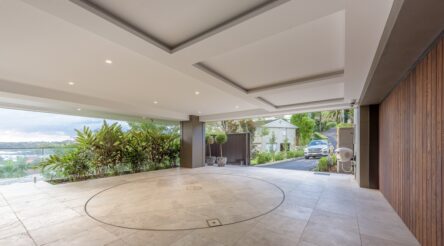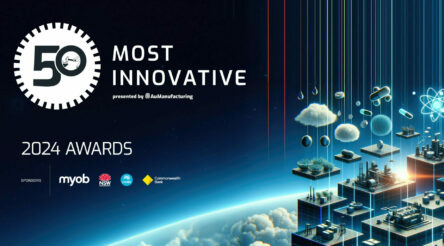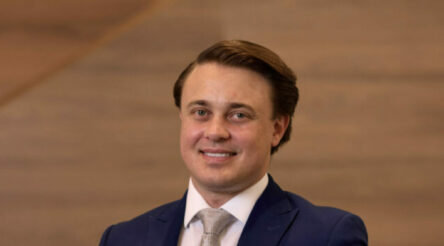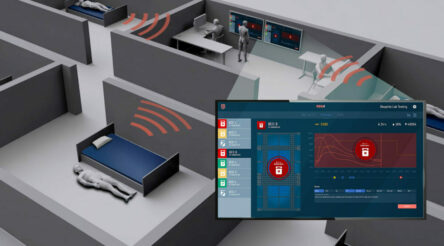Medtech innovator explains the rush to save brains

Today we publish the first of many profiles to run as part of @AuManufacturing’s Australia’s 50 most innovative manufacturers campaign. Brent Balinski speaks to EMVision CEO Scott Kirkland about a homegrown answer to the second-biggest killer in the world.
With about a quarter of all people worldwide having suffered a stroke, it’s a super-prevalent, potentially fatal ailment that has impacted the lives of just about everyone in some way.
According to figures collated by the Stroke Foundation, a stroke happens every 19 minutes on average in this nation, with over 445,000 living with the effects of one. More women are killed by stroke than breast cancer, For men, it kills more than prostate cancer.
Armed with over a decade of world-leading research from University of Queensland, EMVision was spun out in 2017 to address shortcomings in diagnosis and treatment.
Before a suspected stroke can be addressed, it needs to be both confirmed as such, and identified as the result of a brain blockage or bleed. Both are treated very differently, either by drugs or surgery.
The gap between treatment and incident usually includes travel to a clinic, and then delivery of the patient to an MRI or CT machine, which may or may not be available. Meanwhile, an estimated 1.9 million brain cells are dying per minute.
Do you think you belong on @AuManufacturing’s list of Australia’s 50 Most Innovative Manufacturers? Apply to be recognised in this exclusive group here.
If the issue can be resolved within an hour, there’s a much better chance of the sufferer seeing a positive outcome. “Time is brain” is an old saying in the stroke treatment community.
“So the idea is [with] portable, lightweight imaging, widely available and deployed, we can really speed up that time to diagnosis and treatment and increase the number of people that are treated in the golden hour,” Scott Kirkland, CEO and co-founder at EMVision,” tells @AuManufacturing.
“That means less disability, less burden on the healthcare system.”
The goldenness of the hour and the difficulty of achieving it are behind EMVision, whose first product is a bedside imaging device, recently christened as “emu”. It completes a brain scan in under 30 seconds, produces images in minutes, and uses a “traffic light” system to show the probability of a stroke.
 Images are created through an array of antennas/receivers on a silicone cap worn by the patient. Microwave pulses interact harmlessly with tissue and the signals build up a picture of the brain.
Images are created through an array of antennas/receivers on a silicone cap worn by the patient. Microwave pulses interact harmlessly with tissue and the signals build up a picture of the brain.
A second device, using algorithms adopted from the first, is planned for release after emu. The smaller device for first responders will tip the scales at under 10 kilograms and fit inside a backpack.
“[T]his device could well have the same life-saving potential as the widespread introduction of defibrillators 20 years ago” reads an old article from UQ commercialisation arm UniQuest, which helped establish the company.
Asked if the vision is a product as prevalent as defibrillators, Kirkland says yes.
“That is the objective, so we’re making it light enough, easy enough to use that it could be widely deployed,” he says of the company’s second-generation device.
“The first goal is get it in 10, 20, 30 per cent of the [ambulance] fleet and then prove it out that it should be in every ambulance.”
The potential of EMVision’s devices has been recognised through grants including the Australian Stroke Alliance/Medical Research Future Fund, CRC-P, Modern Manufacturing Initiative, and NSW Medical Devices Fund.
Last year it was also named one of Australia’s 50 Most Innovative Manufacturers by this title, and topped the AFR BOSS Most Innovative Companies’ health category.
This year’s plans include reporting on data from Stage 2 of its multi-site, 150-patient pre-validation trial (expected in the first quarter of the calendar year) and delivery of a proof of concept second-generation machine (first half of the calendar year) in preparation for road and air ambulance trials.
On the topic of innovation at the company, Kirkland speaks of it being not about incremental improvements in healthcare but “going from zero to one.”
“So for us it’s not necessarily an incremental improvement to CT that means there’s less radiation dose for patients – that’s a good thing but it’s not a game-changer. Or it’s not a quicker MRI scan that goes down from 30 minutes to 27 minutes – that’s a good thing but it’s not a game-changer,” he explains.
“We think to provide portable imaging, cost-effective, deliver it everywhere – that can really change the landscape for stroke care and traumatic brain injury… So a completely new way of imaging the human body.”
Picture: Kirkland with an emu unit
Episode guide
0:50 – EMVision’s story and why Kirkland joined as a co-founder.
1:40 – What kind of company they are.
2:20 – Further origin story info, including the role of University of Queensland’s Uniquest.
3:15 – The problem of strokes internationally, and the current limitations to diagnosis and treatment.
4:30 – Time is brain. “…About 1.9 million brain cells dying every minute, and the earlier you can intervene, the better the outcome.”
6:10 – About 15 million strokes a year and 50 – 65 million TBI cases a year.
7:16 – Hopefully one day as ambiguous as a defibrillator. “That is the ultimate objective.”
8:24 – The business model.
10:02 – Off-the-shelf and other electronics used in the company’s scanners.
11:10 – Macquarie Park and the benefit of using nearby medtech companies’ “hindsight as our foresight”.
12:07 – Let’s talk about innovation
12:55 – Let’s continue to talk about innovation, specifically in the Australian context and what can be done to improve this.
14:05 – What 2024 could deliver for the company.
15:08 – A few thoughts on the importance of creating and capturing value here, rather than offloading this to overseas interests, and of continuing to do what’s fulfilling.
Australia’s 50 Most Innovative Manufacturers is an annual campaign by @AuManufacturing. It has been made possible through the generous support of MYOB, CSIRO, the NSW government’s Advanced Manufacturing Research Facility, and the Commonwealth Bank. Be sure to check back at this website for regular updates, including profiles of nominees and other information.

@aumanufacturing Sections
Analysis and Commentary Awards Defence Manufacturing News Podcast Technology Videos





